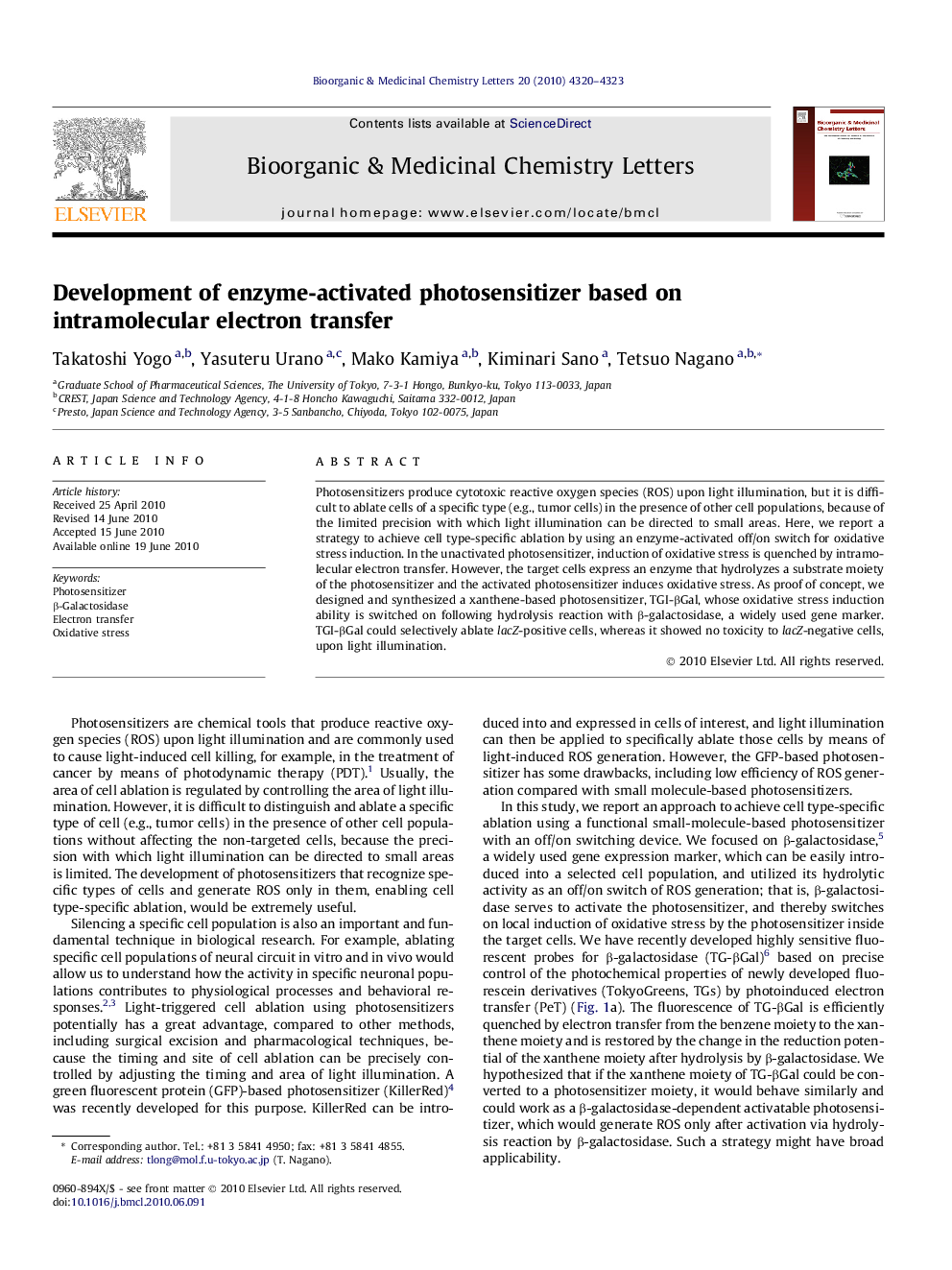| Article ID | Journal | Published Year | Pages | File Type |
|---|---|---|---|---|
| 10596676 | Bioorganic & Medicinal Chemistry Letters | 2010 | 4 Pages |
Abstract
Photosensitizers produce cytotoxic reactive oxygen species (ROS) upon light illumination, but it is difficult to ablate cells of a specific type (e.g., tumor cells) in the presence of other cell populations, because of the limited precision with which light illumination can be directed to small areas. Here, we report a strategy to achieve cell type-specific ablation by using an enzyme-activated off/on switch for oxidative stress induction. In the unactivated photosensitizer, induction of oxidative stress is quenched by intramolecular electron transfer. However, the target cells express an enzyme that hydrolyzes a substrate moiety of the photosensitizer and the activated photosensitizer induces oxidative stress. As proof of concept, we designed and synthesized a xanthene-based photosensitizer, TGI-βGal, whose oxidative stress induction ability is switched on following hydrolysis reaction with β-galactosidase, a widely used gene marker. TGI-βGal could selectively ablate lacZ-positive cells, whereas it showed no toxicity to lacZ-negative cells, upon light illumination.
Related Topics
Physical Sciences and Engineering
Chemistry
Organic Chemistry
Authors
Takatoshi Yogo, Yasuteru Urano, Mako Kamiya, Kiminari Sano, Tetsuo Nagano,
